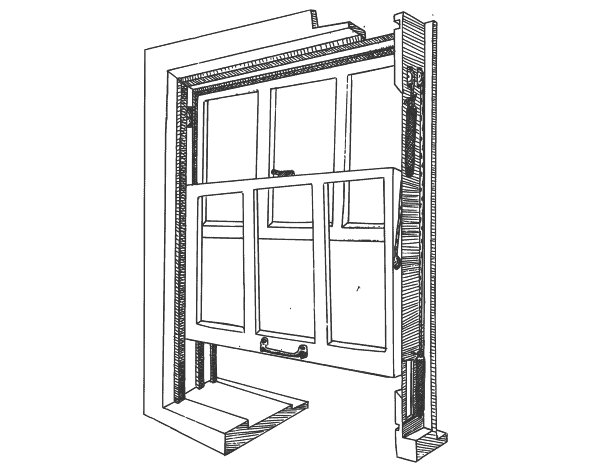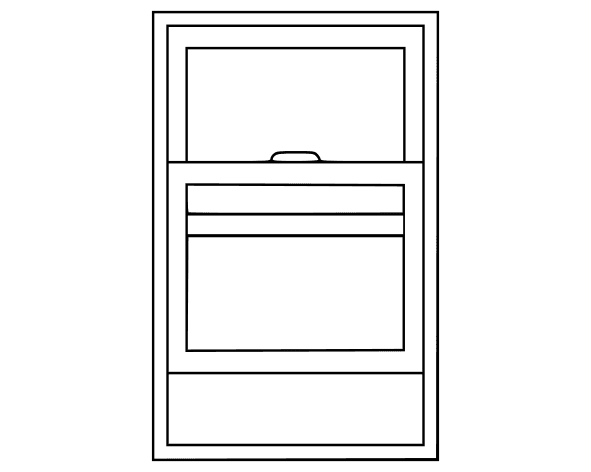
There are many aspects to home windows. Just like you consider the material, toughness, weather resistance, and finish when picking window frames, there are things to think about when it comes to window glass, too. These include:
- Keeping Your Home Comfortable: How well the glass keeps your home warm in winter and cool in summer.
- Saving on Energy Bills: Choosing glass that helps you save on heating and cooling costs.
- Staying Safe: Glass that can handle impacts and weather conditions.
- Feeling Secure: Ensuring your peace of mind.
- Privacy: Finding the right balance between letting in light and maintaining your privacy.
- Peace and Quiet: Reducing unwanted noise.
- Looks: How the glass fits your home’s style.
When it’s time to upgrade your home window glass, our easy-to-follow guide will help you understand how these factors affect your windows. With this knowledge, you’ll be well-prepared to choose the perfect window glass that suits your unique needs and preferences.
Understanding Window Glazing
Window glazing might sound like a technical term, but it’s quite straightforward. It’s all about how many layers of glass your window has. You can have a window with one layer of glass, which is called a single-pane window. Or you can opt for a window with two layers of glass, known as a double-pane window, or even three layers, which we call a triple-pane window. These glass layers aren’t just stacked on top of each other; they are sealed together.

There’s a space between the glass layers, and it’s often filled with either air or a special gas like argon. This space acts as an insulating barrier, and it helps in regulating temperature inside your home by preventing the escape of heat during the cold months and the intrusion of heat during hot ones. Some advanced glass types feature an invisible layer called a Low-E coating. Low-E stands for low emissivity, and it’s essentially a microscopic layer of metal applied to the glass. This coating significantly boosts energy efficiency by reflecting heat back into your home during the winter and blocking the sun’s harmful UV rays during the summer. So, when you’re deciding on the number of glass layers and whether to include a Low-E coating in your window, you’re customizing your windows to perform exactly how you want them to.
Window Glass Replacement Costs
If you’re considering replacing your home window glass, it’s important to have a clear understanding of the factors that influence the cost. The price tag isn’t set in stone; it can vary significantly based on several key elements:
1. Window Size: The physical dimensions of your window play a significant role in determining the cost. Larger windows generally require more materials, and thus, a higher budget. Learn about standard window sizes and how to measure windows.
2. Window Type: Different window styles have varying degrees of complexity. For instance, an arched or custom-shaped window may cost more to replace compared to a standard rectangular one. Check out window types.
3. Frame Material: Your window’s frame material also affects the overall expense. Common materials include vinyl, wood, aluminum, and fiberglass. The material you choose can impact the cost of both the frame and the glass. Which frame material is best for you?
4. Number of Glass Panes: As discussed earlier, windows can have single, double, or triple panes. The number of panes you select significantly influences the cost. Here’s a rough estimate:

Single Pane
Typically the most budget-friendly option, with prices ranging from $125 to $410

Double Pane
Strikes a balance between cost and efficiency, prices average between $490 to $1,810

Triple Pane
Offers top-tier insulation but comes with a higher price tag, ranging from $653 to $2,413
While double-pane windows are the most popular choice for homeowners seeking a good balance between energy efficiency and affordability, triple-pane windows are renowned for their superior insulation properties. However, the added benefits of triple panes come at a higher installation and repair cost.
Glass Type
Average Cost
Single Pane
$125 to $410
Double Pane
$490 to $1,810
Triple Pane
$653 to $2,413
Low-E Coating
$362 to $1,274
Gas-filled
$395 to $1,358
Laminated
$289 to $1,019
Tempered
$296 to $1,044
Frosted
$307 to $1,082
Home Window Glass Costs by Type
- Double-Glazed: Double-glazed windows, also known as double pane windows, are a type of window that consists of two glass panels separated by a space filled with either air or a special insulating gas, such as argon or krypton. This space between the glass panes acts as an additional barrier, providing improved insulation and reducing heat transfer between the interior and exterior of a building. Typically priced between $14 to $17 per square foot, replacing double-glazed window glass is an economical choice for energy efficiency.
- Laminated: Laminated windows are a specialized glass consisting of layers bonded together with a durable interlayer, typically polyvinyl butyral (PVB). One of their primary advantages is enhanced safety; when broken, the interlayer holds the shattered glass, minimizing the risk of injuries and making them ideal for security and extreme weather applications. Additionally, laminated windows offer excellent sound insulation and can include UV-blocking interlayers, safeguarding from harmful UV rays. Replacement of laminated glass averages between $12 to $25 per square foot due to its complex installation.
- Tempered: Tempered glass, also known as toughened glass, is a type of safety glass processed through thermal or chemical treatments, making it significantly stronger than regular glass. One of its distinctive features is its safety profile; when shattered, tempered glass breaks into small, granular pieces instead of sharp shards, reducing the risk of injury. Due to its enhanced strength and safety properties, tempered glass is widely used in applications requiring durability and resistance to impact, such as shower doors, and architectural glass doors. Additionally, tempered glass is heat-resistant, making it suitable for applications where exposure to high temperatures is common. Tempered glass replacement typically costs between $13 to $26 per square foot.
- Thermal: Thermal glass, an excellent solution for energy efficiency, consists of multiple glass panes with insulated spaces in between. This innovative design substantially reduces heat transfer, making it a great choice for enhancing a building’s energy performance. Beyond its insulation benefits, thermal glass minimizes condensation, ensuring clear views even in diverse weather conditions. Expect costs ranging from $11 to $15 per square foot for replacing thermopane glass.
- Plate: Plate glass, characterized by its smooth surface, is a classic choice for windows that emphasize transparency. Unlike other types of glass, it lacks insulation properties, making it less energy-efficient. However, its versatility is showcased in large picture windows, storefronts, and architectural features where a sleek appearance is needed. While it scratches relatively easily, regular maintenance can preserve its clarity and looks. Plate glass replacement is priced between $28 to $110 per square foot due to its clarity and size.
Understanding these cost differences allows you to make an informed decision that aligns with both your budget and your home’s specific requirements. Before deciding on a window glass replacement choice, consider your priorities and budget carefully to find the perfect match for your needs.

How much does window replacement cost?
WinGuys window cost calculator allows you to set price range, brand quality, and many other details to better estimate home window replacement costs.
Key Factors for Selecting Window Glass
To ensure you make a choice that suits your needs and preferences, here are some essential aspects to consider:
1. Energy Efficiency and Insulation
Your windows can be a source of both heat loss and gain in your home. Energy-efficient glass helps maintain a comfortable indoor temperature and reduces your heating and cooling bills. These windows have multiple layers or coatings that prevent heat from escaping in winter and block heat from entering in summer. Look for Low-E (low emissivity) coatings, which are nearly invisible but highly effective at regulating temperature. The cost for this upgrade ranges from $40 to $150 for the entire window.
2. Safety and Impact Glass
Impact performance and safety glass are specifically designed to provide enhanced security and protection in various scenarios. For areas more prone to extreme weather conditions, safety glass a valuable addition. Laminated and tempered glasses are two types of safety glass. Laminated glass consists of two glass layers bonded together with a layer of plastic, while tempered glass is treated to be more robust.
Why It Matters:
- Protection from Break-Ins: Safety glass acts as a barrier against forced entry attempts. It deters burglars and provides added security to your home.
- Weather Resilience: In areas prone to severe weather conditions like hurricanes or tornadoes, impact-resistant glass helps protect your home from flying debris and wind damage.
- Accident Prevention: Safety glass minimizes the risk of accidents and injuries. In the event of breakage, it doesn’t shatter into sharp, dangerous shards, reducing the potential harm to occupants.
Types of Safety Glass:
- Laminated Glass: This type of safety glass consists of two or more glass panes bonded together with a layer of transparent plastic, typically polyvinyl butyral (PVB). In the event of an impact, the glass may crack, but the plastic layer holds the broken pieces together, preventing them from scattering.
- Tempered Glass: Tempered glass undergoes a special heating and cooling process that makes it exceptionally strong. If it breaks, it shatters into small, rounded pieces rather than sharp fragments. This property reduces the risk of injuries.
Choosing the Right Safety Glass:
When considering impact performance and safety glass for your windows, here are some key considerations:
- Location: What type of weather do you encounter on a regular basis? If you live in an area prone to hurricanes, tornadoes, or high winds, impact-resistant glass is a wise choice.
- Security Needs: If you’re in an area with a higher risk of break-ins, laminated glass can provide an added layer of protection.
- Budget: Safety glass can be slightly more expensive than standard glass options. Determine your budget and weigh the added security and safety benefits against the cost.
- Local Regulations: Check local building codes and regulations. Some areas may require the use of safety glass in specific applications.
- Installer Expertise: Ensure that your window installer is experienced in working with safety glass to guarantee proper installation and performance.
3. Privacy Glass
Privacy glass can be textured or translucent and provides an elegant solution to block unwanted views while allowing in natural light. It comes in various styles like tinted, frosted, or obscure, each offering a unique blend of shades and finishes. Prices for privacy glass vary, generally falling between $250 to $900 per window, determined by both the size and the intricacy of the frosting.
For those seeking innovative alternatives, Smart Glass Windows present a futuristic option. These intelligent panes can alter their transparency at your command. Activated by either an electrical charge or heat, they seamlessly shift from clear to opaque, giving you ultimate control over your privacy and natural light.
4. Noise Reduction Glass
Noise-reducing windows are specifically designed for environments where noise levels are high. Opting for triple-glazed window glass, paired with specialized acoustic glazing, ensures optimal noise reduction. Acoustic glass is engineered to be thicker and is carefully laminated, acting as a sound barrier. The additional investment, averaging $35 per square foot, is a small price to pay for the comfort these windows provide.
5. Alternative Window Glass Options
In regions prone to severe weather, traditional glass might not be sufficient. That’s where innovative window glass alternatives come into play, often referred to as thermoplastics. These cutting-edge materials offer a shield against extreme conditions, standing ten times stronger than conventional glass. While the investment varies, ranging from $10 to $45 per square foot per pane, the assurance they provide is invaluable.
Window Glass Replacement vs. Repair
In some cases, it’s better to repair home windows instead of replacing. So, how do you know if your window issues fall into the repair category? Here are some common window glass repair scenarios and their associated costs:
Damaged Glass: If your window suffers a crack, a skilled repair involves sealing it with epoxy and carefully polishing the glass. While the basic repair averages around $325, more complex jobs might reach up to $2,100. It’s important to assess the complexity for accurate cost comparisons against replacement options.
Foggy Windows: Sometimes, windows develop fog due to a broken seal, causing moisture buildup between glass panes. The fix? Replacing one of the insulated glass units (IGUs). This efficient solution comes at an average cost of $175.
Window Leak: Dealing with a leak? Repairing it generally falls within the $125 range. Resealing might add another $160 to the bill, with an extra $55 for professional caulking.
Window Thermal Seal: When the thermal seal fails, repair typically averages around $110. However, if the damage is extensive, opting for window replacement might prove more cost-effective in the long run.
Professional or DIY Window Glass Replacement
A window glass replacement project might seem daunting, which is why many homeowners prefer to hire professionals. If you opt for a DIY approach, you can expect to spend between $215 to $860 on glass and supplies, and while the DIY option might save you some money, the advantages of hiring a professional are significant. Experienced contractors not only ensure precise installation but also complete the job efficiently. Moreover, they provide added assurance through warranties and guarantees on their work, giving you peace of mind about the durability and quality of your newly replaced window glass.
Professional Home Window Glass Replacement
When it comes to professional glass replacement, the process begins with measuring your windows, taking into consideration the window type, glass thickness, and size. Expert contractors remove damaged or broken glass, clean and prepare the window frame, and use the original measurements to cut and fit the new replacement glass to the frame.
The cost of window installation typically ranges from $75 to $355 per hour for replacing window glass. Most projects are completed in under an hour, and more complex replacements might take an hour or more. Although this option costs more than DIY, the job installation assurance and time cost savings associated with professional work remains unmatched.
Some advantages of using a professional for home window glass replacement are:
- Watertight Seal: Pros know how to get a flawless, watertight seal – preventing air leaks and moisture buildup.
- Code Compliance: Navigating building codes can be a pain, and installers handle this by adhering to all regulations and standards.
- Permit Expertise: Similar to code compliance, professionals understand the permit requirements, if any, saving you from the hassle of paperwork.
- Custom Solutions: It takes experience to handle custom or intricate glass replacements, and installers have the knowledge to tailor solutions to your unique needs.
- Cost Efficiency: Contractors source materials wholesale, significantly reducing costs compared to retail prices at home improvement stores.
- Peace of Mind: Reputable window installers offer warranties or guarantees on their work, providing you with peace of mind regarding the durability and longevity of your newly replaced window glass.
DIY Home Window Glass Replacement
Undertaking a window glass replacement project might seem tempting for the DIY enthusiast, but it’s a task best left to the experts. Glass, being fragile, demands precision that a professional glazier can provide. DIY attempts risk breakage, ill-fitting glass, and potential air leaks or sealing issues, leading to unnecessary problems and delays to your home.
Before diving into a DIY window glass replacement, consider these important points:
- Cost Considerations: DIY involves purchasing materials, averaging between $110 to $650 for the glass and $105 to $210 for supplies. While professional installation also requires you to purchase the glass, overall labor costs might prove to be lower than necessary supply expenses.
- Manufacturer’s Warranty: Many window glass manufacturers honor warranties only if replacement is carried out by a certified professional. Opting for DIY could void this coverage.
- Avoiding Consequences: Windows keep outside elements from entering your home, and an improper installation can lead to mold growth or water damage, potentially costing more to repair. Mold removal by professionals typically ranges from $15 to $30 per square foot, while water damage repair averages between $4 to $8 per square foot.
- Weather Exposure: Throughout the project, your home remains exposed to the elements, potentially causing inconvenience and additional damage.
Window Glass Film and Tinting
If you’re already in the process of window glass replacement, now’s the right time to consider window enhancements. Here are some innovative options to consider:
Home Window Glass Film
- Low-E Glass Coating: Investing in low-e glass coating, which costs between $62 to $1,274 per window, is a wise move. This coating significantly improves your home’s energy efficiency without compromising natural sunlight or obstructing your view, making it a smart, eco-friendly choice.
- Security Window Film: If you’re concerned with window glass breakage, security window film offers an innovative solution. Homeowners use this film to safeguard against intruders, accidents, and natural disasters. It’s priced between $6 to $10 per square foot.
- 3M Window Film: Offering enhanced privacy, security, and glare protection, 3M window film is a popular choice. Prices range from $4 to $15 per square foot, depending on the specific type you choose.
- Solar Window Film: Solar window film acts as a protective shield against the sun’s harmful UV rays, reducing heat flow through your windows. This thin, cost-effective layer ranges from $7 to $15 per square foot.
- Smart Window Film: Embrace cutting-edge technology with smart window film, priced from $40 to $60 per square foot. This innovative option allows homeowners to adjust the tint using smart technology (cellphones), and provides unparalleled convenience and control over your home’s ambiance.
Home Window Glass Tinting
Home window tinting offers a dual advantage: controlling your home’s temperature and enhancing privacy. It’s important to note that all window tinting involves a film, although not all films are necessarily tinted. Tinting goes beyond film application; it includes altering the window’s shade or color, unlike most films that maintain a clear appearance. The cost of window tinting varies significantly, spanning from $5 to $120 per square foot. This wide price range accommodates diverse preferences and budgets, ensuring a tailored solution for every homeowner.
Ways to Reduce Window Glass Replacement Costs
Here are some smart strategies to minimize your home window glass replacement expenses:
- Opt for Standard: Customized windows come at a premium. Minimize customizations and maintain the standard glass thickness to keep costs in check.
- Budget-Friendly Brands: Even on a budget, you can find good replacement windows. Compare window brands to find the perfect balance between cost and quality.
- Prioritize Energy Efficiency: Invest in energy-efficient windows. Enhanced insulation not only reduces long-term expenses but also contributes to a greener home. Consider adding storm windows, which can slash heat loss through windows by 20% to 60%.
- Seek Multiple Quotes: Knowledge is power. Gather quotes from at least three reputable window glaziers.
- Strategic Timing: Timing is crucial. Plan your window glass replacement during the slower seasons, such as summer or winter. During these periods of reduced demand, companies are more likely to offer competitive prices.
- Bundle for Discounts: Thinking of replacing multiple panes? Many window companies provide discounts when you opt to replace several panes simultaneously. Take advantage of these bundled deals to maximize your savings.
When it comes to home window glass, the right option truly makes a difference for your property. From energy-efficient coatings to innovative smart technologies, the choice is yours to make your home more secure, and aesthetically pleasing. Hopefully, our information provides you with the knowledge and confidence to make a decision that benefits your lifestyle and home architecture.




